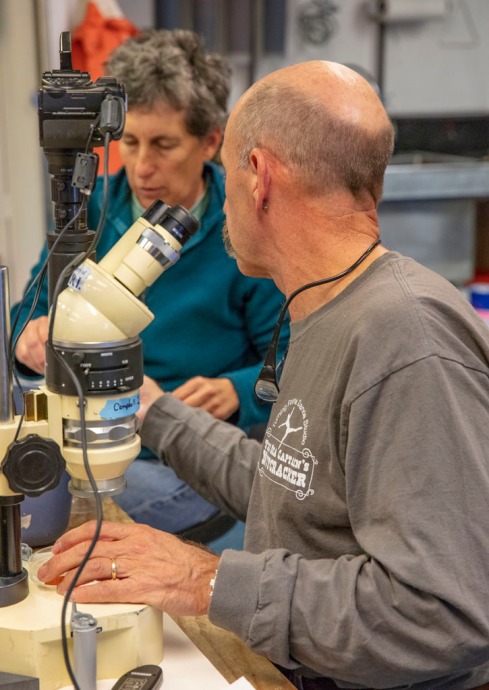August 8, 2018
So that the mooring sits upright, we lower it all the 21 meters down using the A-frame and a second acoustic release, which we use immediately to detach our line and leave the bottom-grounded mooring behind. The Acoustic Doppler Current Profiler will look upwards to measure currents over the Beaufort shelf and to range the diurnal migration of plankton up and down the water column.
The ship, meanwhile, heads to another line beaded with planned stations. At each, a CTD cast will plot the physics, and if the ice allows it, a net cast will capture fish larvae and zooplankton at depths chosen from the sonar imagery. We look. We find. We collect. We study, from above and below. The office printer kicks out temperature and salinity plots and in the lab, specimens are sorted and photographed under microscopes and then moved to the ship’s -80 freezers. In the computer lab, Mike and Jennifer refine our interpretation of the acoustic data.
You can also follow the R/V Sikuliaq @rmtopp & @Sikuliaq on Twitter and @toppworld on Instagram and @R/V Sikuliaq on Instagram and Facebook. To further chart the course of this August 2018 expedition, look up Arctic Winds, Fish, Fins, and Featherson Facebook.
—Thanks to the R/V Sikuliaq, Woods Hole Oceanographic Institute, and the University of Alaska Fairbanks College of Fisheries and Ocean Sciences, and the National Science Foundation.
























